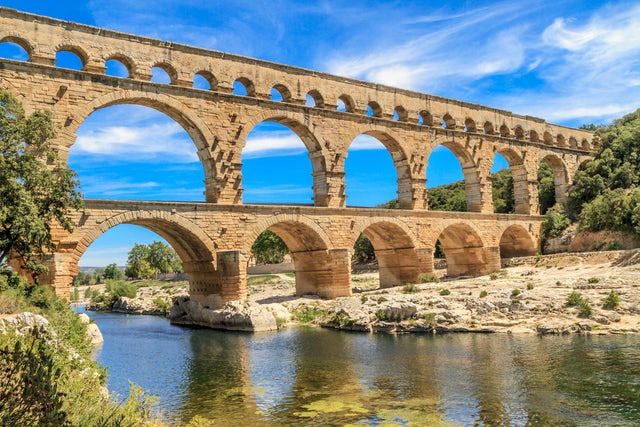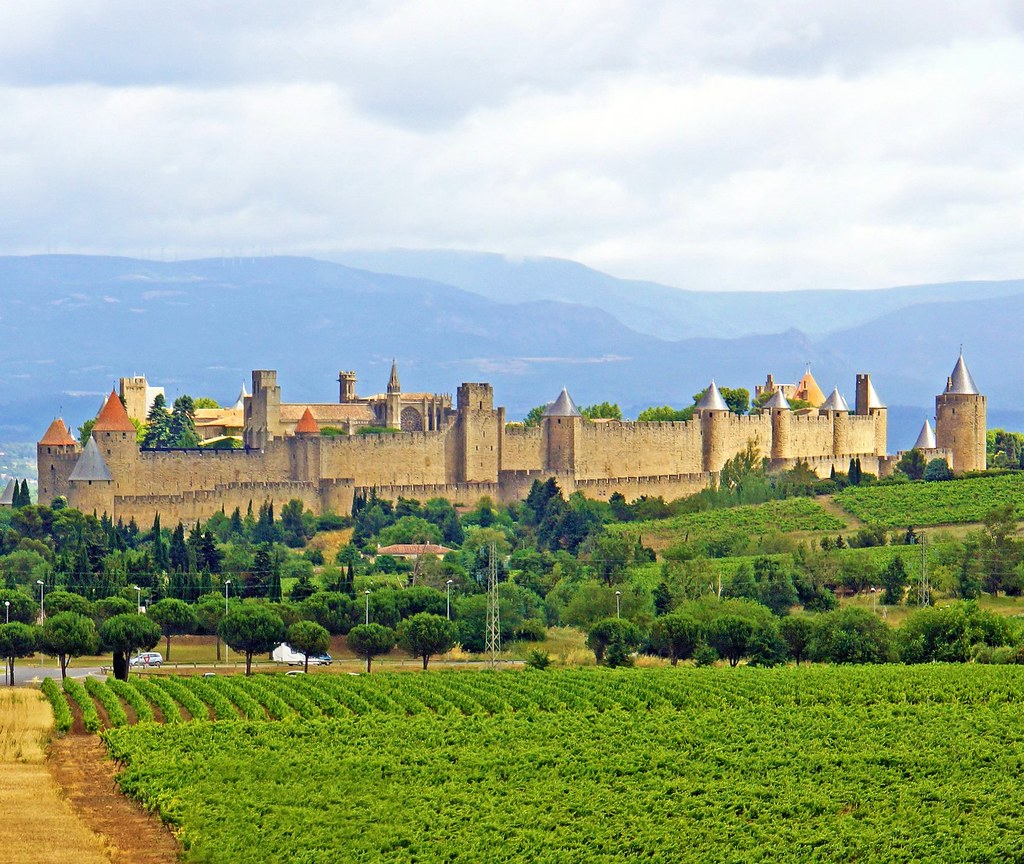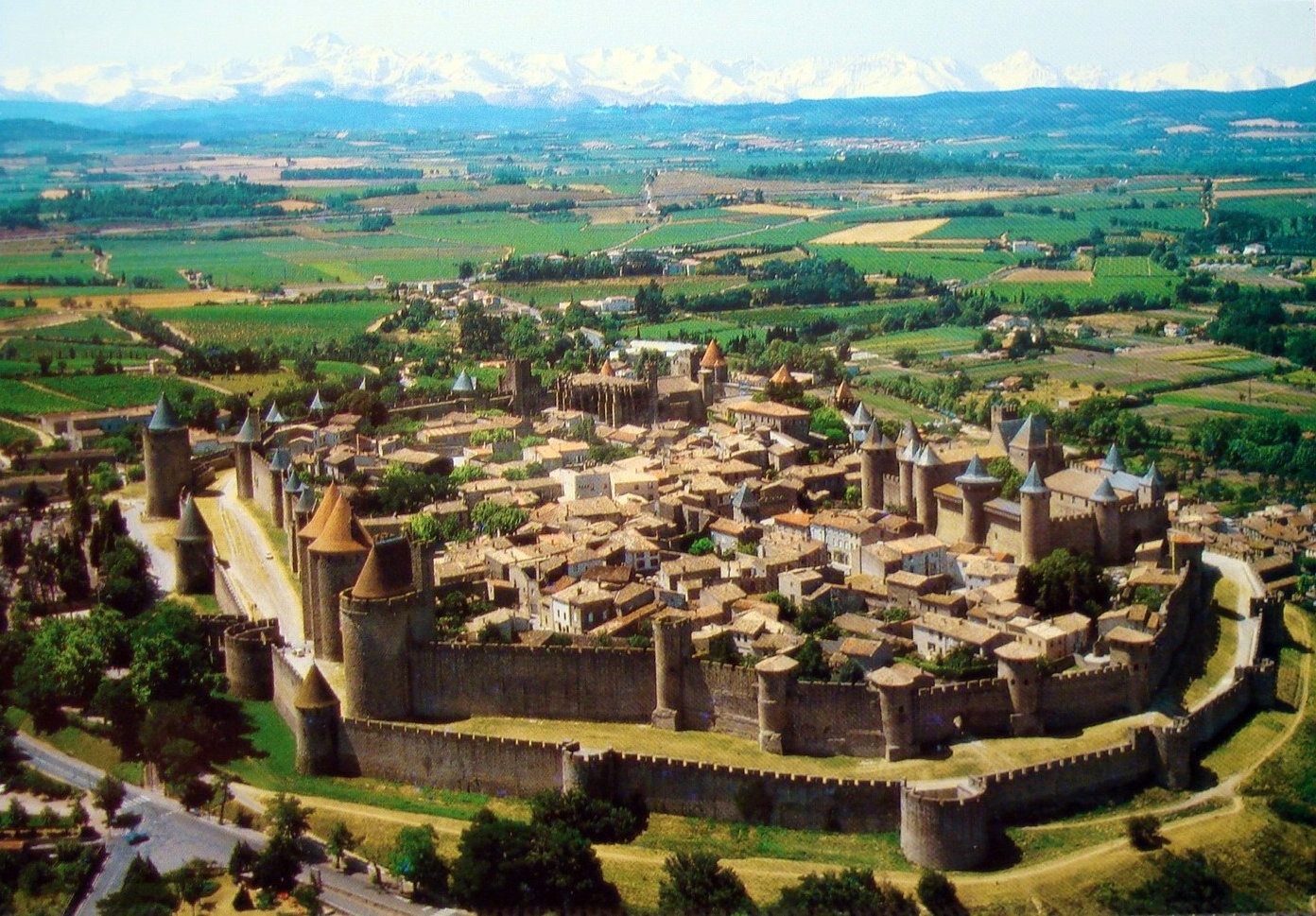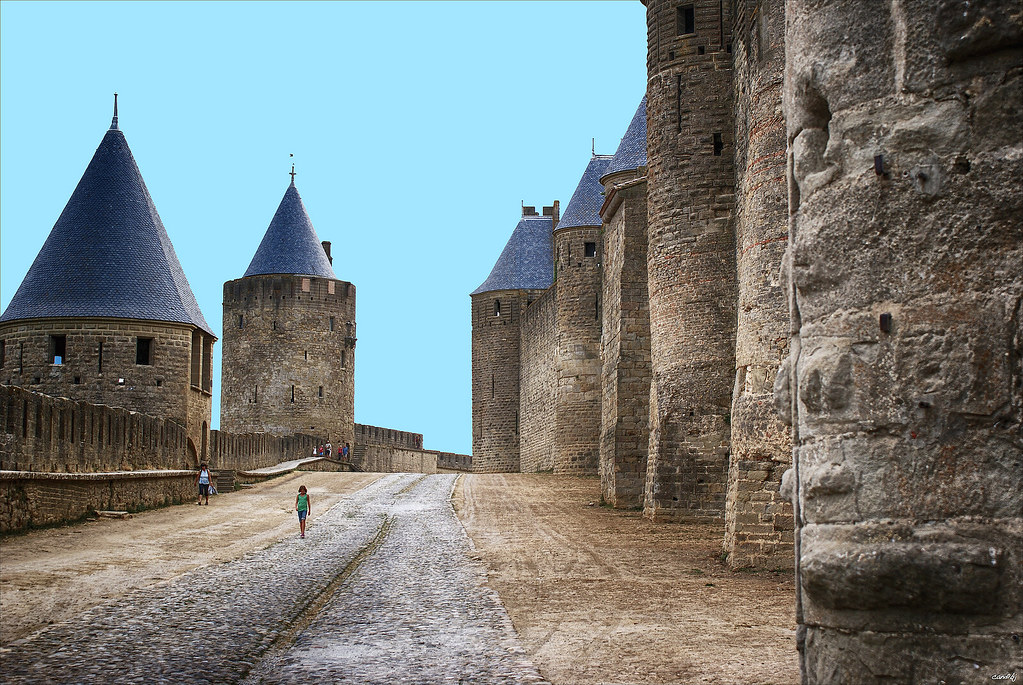France – March 15-24, 2018
PROVENCE
I passed into France twice – once in the Maritime Alps over a high snowy pass and then again on the coast just before the town of Menton, just a few kilometres east of Monaco. Provence is the first province encountered in the southeast of the country.
After spending several hours in Monaco, I went to the small town of Cap d’Ail, in France just on the west border of Monaco to find the Relais International de la Jeunesse Thalassa, a hostel (20€ for a dorm room), as I desperately wanted a shower. After a big drive about on winding, switchbacking roads, I finally found it in a small mansion right on the ocean, but it was closed.
So I hit the freeway going west passing all the big names on the Cote d’Azur: Nice, Antibes, and Cannes in driving rain.
Because of the tolls, the freeways have gas stations associated with restaurants and a shops not accessible from outside the freeway. Italy had one every 25kms or so and I had had my last shower at one. The first one I hit in France was spectacular with a modern shop, a Starbucks, and a Pizza Hut (name-brand restaurants are not associated with them in Italy). And a very clean, modern shower with 20 minutes of hot water for 2€. Some of the most gratifying moments of one’s life (in rough order) are 1. Getting to a bathroom after you have been holding it for too long. 2. Good sex 3. A shower when you are way overdue. 4. Good coffee. 5. Great tasting food that you don’t have to pay a fortune for, and 6. Snuggling with the one you love.
Even a good swim would do and on my West Africa trip last year, when we would get incredibly grimy on dirt roads with open windows in the back of the Oasis truck, I had many of these great showers or swim occurrences often in a stream beside the road. It is not so much the shower itself, but that refreshed feeling after a shave and getting dressed.
Coffee in Italy is very different from small portions. Most Italians drink espresso. So the Starbucks was a joy despite the incredible price – at 6.15€ (the equivalent of $9.84 Canadian) more than twice the price of one in Canada. Starbucks all over the world is very expensive when the exchange is calculated – I once paid over $11C in Dubai.
I drove through most of Provence and didn’t see much.
My First Observations on France
Driving. Speeds were much lower with only a few fast drivers in the left lane. In fact, almost no one is in the left lane. French drivers pass and then immediately return to the other lanes. They are more courteous and less impatient than the Italians.
More McDonalds. When I drove into the large lot in Aix-Province, I had to wait for parking. There were 45 cars parked and the McDrive so busy, there were two women outside taking orders. So much for the world-famous French cuisine. The crowd was mostly 20-somethings with no families with their rambunctious children (as opposed to Italy where there are always lots of families).
I virtually never eat at McDonald’s when in Canada as there are so much better burger choices. As in most countries, the McDonald’s menus vary tremendously (the most radicle is India with no beef). All ordering is from large digital kiosks (do these exist in Canada?). The very complicated menu had tons of choices and I recognized no names other than Big Mac. Besides sundaes (2.4€), there are parfaits (3.7€).
Prices were extreme with the main burgers Menu (fries and pop) were over 8.5€ ($13.60 Canadian). No 1€ milkshakes but 2€ frappes with odd-named flavours like marshmallow and myrtille (whatever that is).
Internet. My first experience at a gas/restaurant service center on the freeway was not good – the supposedly free wifi could not be connected. A second time, the speed was so slow, it was useless. So again, I am back at McDonald’s, where the wifi is lighting fast and connected by a simple “Je accepte”, as opposed to Italy where you can only connect through your Gmail, Instagram, or Facebook.
LANGUEDOC-ROUSSILLON
Stretching from Provence to the Pyrenees, it has been a strategic border since Roman times with Roman aqueducts and hilltop Cathar castles. It is now best known for its vineyards and busy beaches on the Mediterranean shore.
BAS-LANGUEDOC. Coastal, it has the best beaches and is home to the cities of Montpellier and Nimes. In the Middle Ages, it was the property of the counts of Toulouse, but now forms the modern-day departments of Gard and Hérault.
Ancient Cities of Narbonnaise – Nimes, Arles, Glanum Aquaducts and Via Domitia. This is the attempted Unesco World Heritage listing, compiling all the Roman sites into one.
ARLES (pop 54,000). Technically in Provence, it is on its western edge and is known for its Roman ruins where Van Gogh painted about 200 works around town. The little yellow house, which he painted in 1888, was destroyed in WWII.
Les Arènes. Its colosseum has survived virtually intact. 138m by 107m and 21m tall, it sat 21,000.
Fondation Vincent Van Gogh. On the NM list, this museum has no permanent collection but hosts a few exhibitions per year and usually one Van Gogh masterpiece. I finally gave up trying to find this. Everyone kept referring me to Espace Van Gogh, a children’s store.
PONT du GARD. Nothing can top this Unesco-listed Roman aqueduct. 21kms NW of Nimes, this massive three-tiered aqueduct was one of many bridges on the 50km-long system of water channels built around 19 BC to transport water from Uzès to Nimes. Built to cross the Gard River, the scale of Pont du Gard is huge: 48.8m high, 275m long, and with 52 arches remaining – 6 on the bottom of the river, 10 next, and 36 small ones supporting the water channel (there were 44 but several were demolished for the stones). It carried 20,000 cubic meters of water per day.
Each block was carved by hand and transported from nearby quarries – some weighed 5 tons. The gradient of the entire 50km system was about 12cm per kilometer and drops only 2.5cm over the length of the bridge – an amazing demonstration of the precision of Roman engineering.
The museum gives a detailed account of every bridge in the entire system and a good description of all the building techniques.

NIMES. (pop 154,000). 2000 years ago it was one of the most important cities of Roman Gaul. It is famed for the hard-wearing twill fabric, serge de Nimes, now universally known as denim.
Les Arènes. This two-tiered amphitheatre is the best-preserved in France. Built around 100 BC, the areas once seated 24,000 and staged gladiatorial contests and public executions. It is still used for concerts, events, and in the summer, bullfights. At 133m by 101m and 2 stories high, and despite being plundered for stone and generally abused, it is still largely intact. Everyone had an unobstructed view. It is in the process of being heavily restored and the gleaming white contrasts with the dark grey stained stone of the unrestored part.
Musée des Cultures Taurines. This bullfighting museum has costumes, fans, phones, and trophy bullheads.
Maison Carrée. Constructed of brilliant limestone in 5 BC, this temple was built to honour Augustus’ two adopted sons. It is well preserved with stately columns and great steps. There is no need to go inside except to watch a cheesy film.
Carrè d’Art. This glass and steel building was designed by Sir Norman Foster and contains the municipal library and Musée d’Art Contemporain, art from the 1960s onwards.
Musée du Vieux Nimes. This municipal museum gives Nime’s history from Roman times to the modern era. It has a display of denim-wearing celebrities.
MONTPELLIER (pop 272,000). This is a very stylish city. I came to walk the old town and see the Musée Fabre with its rich collection of European art. But I couldn’t find a parking space despite a major drive around, so I got to see a lot of the city – out my car window.
From Montpellier, I drove along the coast to Perpignan and then turned west along the D117 to drive through stunning countryside and many small Provence-like towns.
Carcassonne and Mountain Sentinel Castles is the Unesco designation.
CATHAR CASTLES
Catharism. Faced with the wealth and power of the Catholic Church in the XI and XII centuries, various religious movements emerged, claiming that the clergy, servants of Christ, should be poor, as he was, and that the holy scriptures should be respected. Catharism was one of those movements.
Catharism was present throughout Europe in the 12th century, and it drew its inspiration directly from the Gospels, in particular, that of St John. They had a dualist view of Christianity and tried to account for the presence of evil in the world by reasoning that God cannot be responsible for evil. In God’s kingdom, he created souls. The devil created the physical world and caused the fall of souls to Earth.
Many of the feudal lords of the south of France protected the Cathars, and Catharism became so widespread in Languedoc that the crusade supported by the (newly founded) Inquisition and Pope Innocent III, attacked the region and eventually, in the first quarter of the 14th century, stamped out this unorthodox religion.
There are four remaining castles open to the public. Perched on rocky outcrops on the top of ridges, they are atmospheric locations. They can be accessed from Perpignan or Carcassonne.
1. Chateau de Quéribus. This was the site of Cathar’s last stand in 1255. It sits on top of a small rock surrounded by sheer cliffs except for a narrow constructed path. It was defendable by only 15-20 soldiers. It is still well preserved. Walk all the defensive positions, storerooms living quarters. The central keep is a big tower with one central column supporting a high ribbed arch. Take a spiral staircase to the roof for mind-blowing views of the Mediterranean and Pyrenees. (42kms NW of Perignan via the D117).
This is the only one of the castles I visited. It is a good climb up to the top.
2. Chateau de Peyrepertuse. Visible from Quéribus, it is the largest of the four on a sheer spur with a drop of 800m on either side. Several of the original towers and sections of ramparts are still standing. In August, it holds falconry displays and a two-day festival. (51km from Perpignan)
3. Chateau de Pullaurens. It is dramatic with the full range of medieval defences: double walls, four corner towers, and crenellated battlements. Views are across plains and pine woodland.
4. Chateau de Puivert. On a 605m promontory, it was built by the Congost family, high-profile Cathars. It was besieged in 1210 and still retains much of its medieval appearance. (58kms SW of Carcassone via the D118 and D620)
The drive to Carcassonne was gorgeous going through several typical small towns sited below rugged limestone ridges. At one point, the road is built over the river as it cuts through a rugged gorge.
CARCASSONNE (pop 50,000). This fortified city looks like something from a children’s storybook with huge walls and zigzag battlements. It’s most people’s idea of the perfect medieval castle. Unesco listed since 1997, the old walled town is now known as La Cité and attracts 4 million visitors per year, peaking in the high summer.
The fortress dates back over two millennia and has been fortified by Gauls, Romans, Visigoths, Moors, Franks, and Cathars. After the area of Roussillon was annexed by France in 1659, its usefulness declined and it slowly crumbled into disrepair. In the 19th century, the architect Viollet-le-Duc restored it adding distinctive witch’s hat roofs to the 52 stone towers on the much higher inner wall. There is a wide moat and two sets of walls separated by a 30m space, Les Lices that runs for over a kilometre around the castle. Designed as a defensive space, during the medieval era, the city’s poorest residents built a shanty town of houses and warehouses here. Walking it is the only way to appreciate the castle’s martial architecture.
After parking your car (6€), the entrance is free. Enter through the lower wall, then cross through the main gate with evidence of a draw bridge. One is immediately confronted by a mob of tourists and knick-knack stores. The streets are arranged in concentric patterns. To walk on the ramparts, enter the Chateau and pay the fee.




The only real thing to see inside the fortress is the lovely Basilique St-Nazaire. The main body was under reconstruction but the nave and transepts were more than enough. The rose window, stained glass, and stucco sculptures on the columns are wonderful.
I met a couple and their friend from Bellingham Washington in the church. He was a doctor and they invited me to join them for a drink. We had a nice visit.

PONT VIEUX. This is the oldest and prettiest of the many bridges across the Aude River. It was built in the 14th century to provide a link between Carcassonne’s upper (the fortress) and lower towns (the modern town with several private mansions and religious buildings)